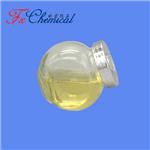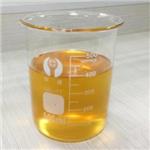Cocamide DEA is also named N,N-bis(2-hydroxyethyl)
coco fatty acid diethanolamide, coconut fatty acid
diethanolamide, cocoyl diethanolamide, and coconut
oil acid diethanolamide. It is manufactured from
coconut oil and is widely used in industry and at
horne as a surface-active agent. It is contained in hand
gels, handwashing soaps, shampoos and dish-washing
liquids for its foam-producing and stabilizing properties,
and in metalworking fluids and polishing agents
as an anticorrosion inhibitor.
viscous yellow to amber liquid
cocamide DEA is a thickener and viscosity builder for cosmetic surfactant systems. It is added to lauryl sulfate-based liquid cleansers to help stabilize the lather and improve foam formation.
Coconut diethanolamide is a mixture of ethanolamides of coconut acid. It is a component in bath, shower and body cosmetics and in cooling fluids; emulsifying agent; emulsion stabilizer; surfactant- and viscosity-controlling agent.
Coconut diethanolamide has the properties of wetting, washing, emulsifying, softening, etc. It has good foam stabilising effect on anionic surfactants. It is an indispensable raw material for a variety of cosmetic products such as liquid detergents, liquid soaps, shampoos, cleansers and cleansers. When used with soap, it is resistant to hard water.
It can also be used as an emulsifying stabiliser for cream products, and is widely used in shoe polish, printing inks, drawing supplies and so on.
It is used in the textile printing and dyeing industry as a detergent for fabrics, as well as other detergent ingredients and thickeners.
It is one of the components of spinning oil for synthetic fibres such as polypropylene. It has a good thickening effect on liquid products using anionic surfactants as the main raw material.
It has a certain antistatic conditioning effect and is less irritating to the skin.
It is widely used as an emulsifier for oily raw materials in various cosmetics and surfactant products. It is commonly used in cosmetic formulations for bath oils, shampoos, conditioners, lipsticks and hair dyes. It is also a surfactant in soap bars, light detergents and dishwashing detergents, and a degreasing agent for cottonseed.
Viscous amber or yellow liquid. pH (1% aqueous solution) 9.
Water soluble. Foams in water.
Coconut diethanolamide is a mixture of amines. Amines are chemical bases. They neutralize acids to form salts plus water. These acid-base reactions are exothermic. The amount of heat that is evolved per mole of amine in a neutralization is largely independent of the strength of the amine as a base. Amines may be incompatible with isocyanates, halogenated organics, peroxides, phenols (acidic), epoxides, anhydrides, and acid halides. Flammable gaseous hydrogen is generated by amines in combination with strong reducing agents, such as hydrides.
A poison by ingestion. A moderate skin
irritant.
Coconut diethanolamide is probably combustible.
Cocamide DEA, manufactured from coconut oil, is widely used in industry and at home as a surface-active agent. It is contained in hand gels, hand washing soaps, shampoos, and dish-washing liquids for its foam-producing and stabilizing properties, and in metal working fluids and polishing agents as an anticorrosion inhibitor.
A poison by ingestion.
A moderate skin irritant. Questionable
carcinogen with experimental Carcinogenic
data reported. When heated to
decomposition it emits acrid smoke and
irritating vapors.
Coconut diethanolamide is produced by the condensation reaction of an appropriate fatty acid (methyl cocoate, coconut oil, whole coconut acid, or stripped coconut fatty acids) with diethanolamine in 1:1 or 1:2 molar ratios using temperatures up to 170°C and in the presence of an alkaline catalyst. The 1:2 mixtures of fatty acids (or methyl fatty acids) with diethanolamine result in low quality diethanolamides with residual ethylene glycol and free diethanolamine. 1:1 mixtures produce higher quality diethanolamides with much less free amine, and are therefore used in lower concentrations than the 1:2 diethanolamides.


